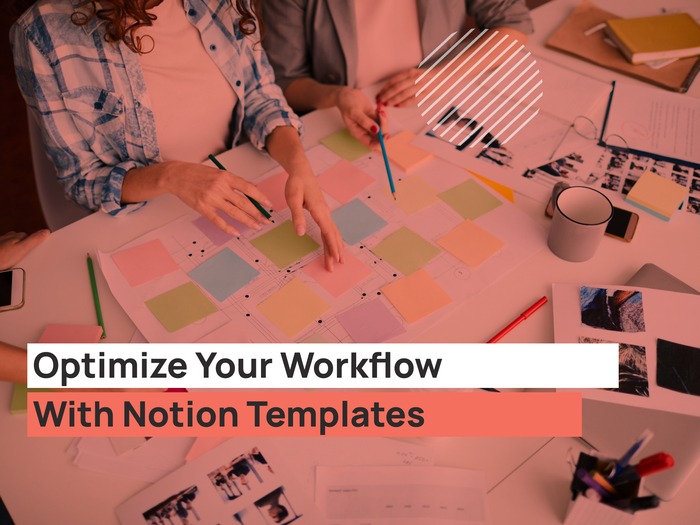You need to build an online course but don’t know where to start? On this article you’ll learn how to create your own course platform to provide courses of all kinds and sizes.
Before you set out to build an online course, you need to ensure that your hard work pays off. What’s more, teaching your topic helps to establish you as an expert in your field. It also shows your audience that you are good at what you do.
Even then, if you are looking to build and sell an online course, there are several best practices that you should follow to help you reap the most from your hard work.
Today, an online course is as important to an expert and entrepreneur’s toolbox, as is a business card and a well-designed website.
An online course has proven to be the best and most impactful way you can get your knowledge to the global marketplace. What’s more, the E-Learning Statistics are much higher compared to years ago.
Therefore, for a course to be impactful, you will need to download the knowledge you have lying dormant in your brain then turn it into an impact-creating, lead-generating, and money-making online course.
But the question remains on how to build an online course that sells and how to build an online business course. Well, this is how…
9 Step by Step Ways to Build an Online Course That Sells – 2020
Let’s look at how to build an online training course that does well and what can help you succeed when launching it. This will play a huge role as you strive to build an online business.
#1 – Hire Professional Services
An online course is often made up of different elements. These are elements like course text, marketing graphics, scripting for audio courses, instructional graphics, and also video production.
For a multi-media wizard who is a; illustrator, graphic designer, animator, videographer, Copywriter, and voice-over artist then professional help might not be necessary.
But for those who don’t possess these skills, seeking professional help may be the best way to go about this. This can also be advantageous if you do not have all the production equipment and tools needed in creating a website design or any of these elements.

Fortunately, working with a design agency that has all the necessary skills and equipment can help you create every feature of your online course material. This can also be useful for you if you don’t plan to do it yourself or don’t possess the skills to do so.
What I can recommend on this is: if you want to create a course that will make a difference, and you succeed at it, and still make money, getting help from someone experienced can make a big difference.
So what are the pros and cons of hiring professional services?
Pros
- Someone will do the heavy lifting for you
- You’ll have a course that will offer value to your students and still work for you
- You will own the course
- It helps grow your brand
- The course creation process takes less time to create thanks to the experience of professional help you contract
Cons
- Finding professional help can be challenging
- There’s no guarantee you’ll earn from it
- Creating a course nobody wants to buy
- You don’t know what you want
#2 – Identify Your Niche and Ensure that Your Lesson Ideas are Profitable
As you create an online training course, you’ll need to focus on a specific group of people plus solve a specific problem for them. And that’s how your online course sells.
This means, when creating a course that sells, you’ll need to offer content that appeals to a specific kind of audience. It also needs to attract clients who are willing to buy what you’re offering.
Here, the focus should be on quality as opposed to quantity. Although your marketing efforts might reach a large number of people, if no one is interested in your course, then you won’t get anywhere.
That’s why focusing a target group into a specific niche can be powerful.
Also, you should identify a specific idea—and still ensure that it is profitable. No one wants to spend their time building a course only to discover that no one is buying it.
This is among the biggest mistakes that many new course creators tend to make— often they don’t check to ensure that students want to study the particular topic they’ve chosen. That’s why some struggle to engage and also attract more clients later on.
When picking an idea that sells, keep this in mind: if there is a course out there on the very topic you’re looking to build your course, that’s considered as news.
Again, if it was never done before, it can only mean two things: people are not interested or they are interested, however, nobody has done it (this also represents an opportunity).
To help you identify a topic for your course, there are some resources you can use for this. For instance, Google Search can help you find out what conversations talk about around the topic.
Also, checking Facebook Groups and Industry Forum can help you know about what people are asking other people about the topic.
Again, your competitors can be a great resource. Therefore, check for anything noticeable and missing from what they are offering. That will be your topic. Why is identifying a niche topic important?
Pros
- Your course offers a solution for your student’s problem
- The courses address a need for a specific group
Cons
- Creating something no one wants
#3 – Develop the Perfect Client Avatar/Learner Profile
You have a target audience and you have a way to solve their problems. The next step is to map out a way to bring the solution in a useful and memorable way.
When creating a course, it’s important that you have a client’s avatar. But, your focus needs to be on a hypothetical person.

That means you’ll need to have an exact learner profile in mind when creating your course. Plus avoid thinking your customer will be “everyone,” as it can mean it’s “no one.” Not what you had in mind, right?
To avoid this, you’ll need to appreciate their needs, frustrations, and desires when creating content for them. This is because it should directly address them as much as possible.
Once people notice that you’ve made a course that seems to be only meant for them, they’ll have an instant connection to it. That’s what you should go for.
With that client avatar in mind, proceed to describe your perfect student in one paragraph or thereabout. Also, keep this ideal learner profile in mind when you’re creating the entire course.
Pros
- Helps you understand the desires, needs, and frustration of your students
- Help you create a course that addresses the identified need and desires
- Helps you understand who you are serving
Cons
- Identifying the wrong need or desire
#4 – Define Your Training Goals
Before developing a course, you must consider what success for your clients will look like. This is a big area of importance since it will set you up long-term. As such, the intention behind launching an online class needs to be clear.

Again, decide on your business metric plus the impact you’d like your courses to have. For instance, an established business could be offering online classes for different reasons. One reason could be your aim is to train your clients on how to use specific tools.
Regardless of the topic and business, you are in, the first step is to ensure you are clear about your course goals.
Three items you need to be clear about include;
Business goal: Identify your financial and additional growth outcomes you can expect the course to bring to your business.
Learning objectives: Be clear about what your students will achieve after completing the course.
Teaching Goal: Clearly define the teaching goals to be achieved when you launch your course. This could help your learners master a tool or help your clients use a product better or to teach a given subject.
Pros
- Helps you define your business, teaching and learning goals
- Helps you offer value to your clients
- Opens opportunities to attract more clients
Cons
- Not capturing all the identified goals and objectives
- Getting inaccurate feedback
#5 – Outline your Online Lessons and Build the Course Content
Divide each module into different folders and sub-folders, also include topics and sub-topics. When planning each module, remember to think of the learning objective.
Put yourself in the learner’s shoes and try to establish the most effective way your course content flows. Create a combination of the different forms of content that will be more engaging.
How long does it take to build an online course? While the answer to this question may vary, doing a module planning can help you set up a tentative release timeline for the content. And always document this.
But the real work starts when you are building your online course content. However, this process does not have to be time-consuming.
The below steps can simplify the entire process for you.
Information Source
Pull together all the information you’ve accumulated to date.
Collect Developed Content
Carefully gather all the content you have already developed thus far. All the digital copies, PowerPoint presentations, training manuals, product demos, pre-recorded videos, support articles, and other forms of content should be put together.
Organize
Next, organize the pieces you’ve accumulated cohesively. While the overabundance of files you’ve gathered can be overwhelming. Don’t let this distract you. Instead, choose only materials that are in alignment with the set learning objectives.
Update
Once your content is well organized, identify the content you need to develop from scratch or update.
Pros
- Makes the creation of a course flow seamlessly
- Updating content helps improve your course
Cons
- Can be dreary
- Takes a long time
#6 – Decide on the Most Engaging and Effective Delivery Method for Your Lessons
The next step is deciding on how to build an online course platform. So, which is the best way to deliver each lesson?
For a course to be effective, you should know of the different learning preferences and the principles of adult learning.
Also, know about all the different ways you can use to deliver your course content to truly ensure that the course is as engaging and effective as possible.

You need to ensure you have a balance of audio, visual, and other practical methodologies. That way everyone is engaged and given optimum learning experience.
For a course to speak to new active learners, consider engaging them in diverse forms of learning styles by building an all-inclusive curriculum.
There are several options you could use when putting a course together:
- Written content
- Video content
- Audio content
To do this, you might need to know how to build an online course website or how to build an online video course platform. Also, knowing how to build an interactive online course will come in handy in this step.
The reason for offering different types is since different people learn in different sorts of ways.
Therefore, by offering them choices, you’ll be creating a better user experience. This is more likely to help people succeed so they will leave positive reviews. In turn, this will boost your course sales. Plus these testimonials can be used for marketing.
Pros
- This makes it possible for you to reach more people
- Helps increase user engagement
- Allows you to choose the suitable course delivery method
Cons
- You might not have the equipment, tool or skill needed to create a course option
- Can take a long time
#7 – Fine Tune and Publish
You now have a finished course; the next step is to get it to your learners. However, this can be done depending on your needs.
It could be that you want to monitor your learners’ participation while making sure they’ve passed the tests or quizzes in the course. For this, you need to have an LMS (learning management system) that can track and deliver e-learning activity.
Again, if tracking is not important, consider posting the published course on a web server or website then share the link with your students.
Come up with an effective delivery strategy and depending on the delivery method you choose, it should allow you to have a payment method like Stripe or PayPal. You can set up this option by following the instructions given on your course platform.
Also, keep looking for ways to improve your course. The best way would be directly asking your audience. Consider sending out evaluation forms or better still ask for their opinions. With the information gathered, update your course then re-launch your new and improved course version.
Pros
- It gives you learner feedback and engagement level
- It’s great a source of course improvement ideas
Cons
- An ongoing process
#8 – Marketing Your Course
After the online course is ready to sell, you’ll need a way of directing paying students to the course –and on autopilot.
That’s where a sales funnel comes in.
Your sales funnels need to start wide at the top to help attract website visitors who would be interested in your course. As they go through the funnel, it needs to narrow and weed out those who aren’t going to purchase your program.
Include your online course on your sales funnels but as a medium-priced offer. Also, consider filling the rest of the funnel, by including a lead magnet (a freebie) to persuade potential clients into the funnel. Plus have follow-up emails to help grow your relationship with the gained leads.
The main parts of a sales funnel set up include:
- Lead Magnet (freebie linked to the course)
- Opt-In Page (so people can request your freebie)
- Email Follow-ups and
- Sales Page
- Download and/or Thank You Pages (for the freebie and course)
The Sales Page is a crucial part of a sales funnel since it helps people know about and buy your course.
Remember that marketing is an ongoing action and how many courses you sell will often depend on your digital marketing efforts. Thus to sell more, you will need to continue your marketing activity.
Pros
- Create a targeted sales page
- Reach your target audience easily
Cons
- Poorly done sales page can jeopardize your marketing efforts
#9 – Measure Your Success
The final and important step is measuring the success level of your course. Today, there are many great approaches for measuring a course’s success which include low-tech paper surveys, performance improvement, and data-driven analysis of ROI.
The good thing, you’ll determine which aspects of the training were most effective, you’re your learners, liked, and even what they did not like.
Having an effective measurement helps you improve future versions of a course, and build better courses later on. Plus you’ll be able to make more informed decisions on how to build e-learning programs.
Pros
- Identify what is working and what is not is easy
- Helps you create a better course in the future
Cons
- Getting inaccurate feedback
Building an Online Course that Sells: Time to Take Action
When creating an online course, remember that your role doesn’t end once you make a sale. Another task would be to ensure that your learners are indeed gaining knowledge from what you’re teaching and will succeed.
What’s more, happy and successful students are likely to refer a course to friends, participate in future courses, offer useful feedback, and leave testimonials plus positive reviews. Also, they are not likely to get a refund for paid courses.
In a nutshell when your students succeed, so will you.



